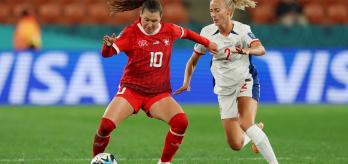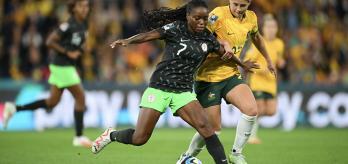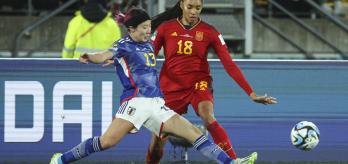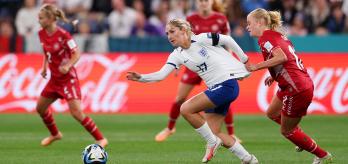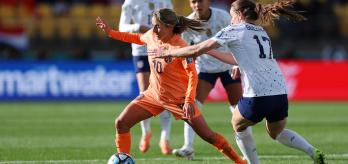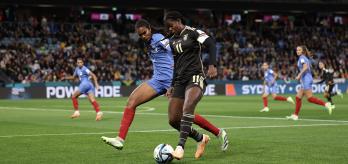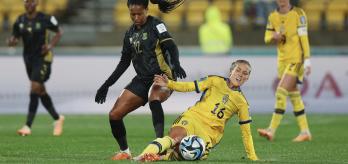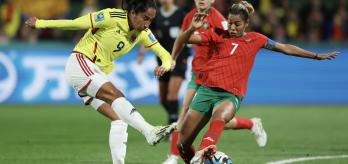Japan produced arguably the most dominant group-stage display of the tournament and enter the knockout stages as a dark horse. The Nadeshiko put five past Zambia, two past Costa Rica and four past Spain, and have yet to concede a goal. Spain claimed two victories of their own, which proved enough to see them go through in second. Zambia recorded their first ever World Cup win by beating Costa Rica 3-1 in their last game of the group stage.
Japan
Aline Pellegrino: In possession Japan set up with a back-three. The wing-backs position themselves high up the wide channels, engaging with the opposition's back and midfield lines. Japan's midfielders are incredibly technically capable, can speed up the tempo of passes, and look to play into the dangerous runs of their wing-backs and forwards. This often results in triangles, overloads and 1v1s out wide or in behind the opposition's defensive line. With 11 goals in three games, this Japan team know how to be clinical in the final third.
Out of possession, Japan defend with up to nine players behind the ball depending on the situation. Their defensive structure consists of two symmetrical and compact lines that leave no space for infiltrations inside. This forces the opposition to play through the wings. In these areas of the pitch, Japan will double-mark the player on the ball to prevent any meaningful ball progression. When they are without the ball, Japan have shown they can still control games and can keep their opponent away from the dangerous areas of the pitch.
So far, we have seen the best version of Japan since their first World Cup win in 2011.
Spain
Anna Signeul: Spain stay true to their possession-based football. Their build-up is patient and the team want to establish their play in the opponent's half and predominately in the final third. Spain use the full width of the pitch by positioning either their wingers or full-backs out wide. The space created by these players is used to facilitate attacking combinations both wide and centrally. The long diagonal switch of play is a tool used by Spain both to stretch the opponent and as another means to open up space for their sharp combination play.
The Spanish players have outstanding individual awareness and technique in tight spaces. They can change the passing tempo quickly and execute great combination play and passing triangles. These are built on short, quick passes and excellent off-the-ball movement, and ultimately help players receive both in between and behind opposition lines. Out of possession, Spain's biggest weapon is their emphasis on counter-pressing.
Zambia
Aline Pellegrino: Zambia built their game through line breaks and direct passes. Their attacking game plan was to use their fast wingers to activate their main attacking threat, Barbra Banda (11). The combination of wingers and Bamba meant Zambia were devastating in attacking transitions and counter-attacks.
Out of possession, the Copper Queens used their pace up front to pressure the opposition's first and second defensive lines. Up to five players would be stationed in midfield as part of a player-orientated defensive system; these midfielders would push on to any opposition players offering to receive the ball. Zambia's defensive intensity demanded speed and quick decision-making from their opponents.
With their passionate fanbase supporting the team in New Zealand and a victory against Costa Rica, Zambia had a World Cup debut to be proud of. The Copper Queens also take home the accolade of scoring the 1000th goal in the history of the Women's World Cup.
Costa Rica
Mónica Vergara: Out of possession, Costa Rica spent most of their time defending in low and mid-blocks. Spain and Japan used play in wide areas, player rotations, fast combination play and runs in behind to overload Costa Rica.
In possession, Costa Rica had a strategy of direct attacking intent, but they struggled when opponents reacted quickly with a counter-press. Their final group game against Zambia was their best performance. In possession, they had progression in their plays, made 17 attempts at goal and scored their first goal of the competition. However, Zambia's counter-attack was ultimately superior. Costa Rica goalkeeper Genesis Pérez made many interventions, was brave and saved many attempts on goal.








